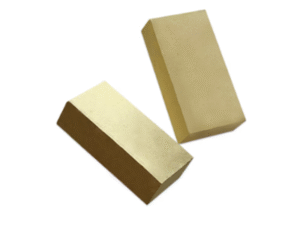Address
Building 1, Zone 1, Greenland Binhu International City, Zhengzhou, Henan, China
Work Hours
Monday to Friday: 9AM - 7PM
Weekend: 10AM - 6PM
Address
Building 1, Zone 1, Greenland Binhu International City, Zhengzhou, Henan, China
Work Hours
Monday to Friday: 9AM - 7PM
Weekend: 10AM - 6PM
High-aluminum products (such as high-aluminum bricks, high-aluminum castables, etc.) are widely used in the steel, metallurgy, glass, ceramics and other industries, especially in high-temperature furnaces, furnaces, kilns and other equipment. The following are the main points of the production process of high-aluminum products:
The main raw materials of high-aluminum products are usually bauxite (Al2O3), bauxite, bauxite, bauxite concentrate, etc., and auxiliary raw materials are clay, quartz sand, clay, modifiers, additives, etc. The selection and proportion of raw materials directly affect the performance of the final product.
Dry mixing: Dry mixing the raw materials in a certain proportion to ensure that the components are evenly distributed. High-precision proportioning is ensured by using an automated batching system.
Wet mixing: Sometimes an appropriate amount of water or other binders are added for wet mixing to enhance the bonding of the raw materials.
Additive use: Appropriate additives such as antioxidants, plasticizers, etc. can be added during the batching process to improve the physical properties and usage characteristics of the product.
Molding is a key link in the production of high-aluminum products. Common molding methods include: pressing molding,casting molding, extrusion molding
The temperature and humidity need to be controlled during the drying process to avoid cracks or deformation of the product. The drying temperature is usually controlled between 50-120°C.
Firing is the core step in the production of high-aluminum products. The mineral phase in the raw materials is transformed through high-temperature firing to improve the mechanical strength, high temperature resistance and thermal shock resistance of the products.
The fired high-aluminum products need to be cooled slowly to avoid excessive thermal stress and cracks caused by too fast cooling speed. The cooling process is usually carried out in a furnace, and the cooling speed needs to be precisely controlled according to the material, specifications and use requirements of the product.
Inspection: The fired high-aluminum products need to undergo strict quality inspection, including appearance inspection, size inspection, strength test, refractoriness test, etc.Packaging: Qualified high-aluminum products will be packaged according to customer needs. When packaging, it is necessary to ensure that the product is not damaged during transportation. Wooden boxes, pallets, etc. are usually used for transportation.
According to needs, high-aluminum products can also undergo some special post-processing processes:
Impregnation treatment: Sometimes high-aluminum bricks are subjected to certain chemical treatments or impregnations (such as impregnation with antioxidant liquid, anti-penetration liquid, etc.) to further enhance their performance.
Heat treatment: Some high-aluminum products can also undergo special heat treatments, such as high-temperature annealing, to further optimize their physical and chemical properties.
The production process of high-aluminum products requires high-temperature firing, which usually requires higher energy consumption. In order to improve production efficiency and reduce costs, modern production processes will combine high-efficiency kilns, waste heat recovery and other technologies to reduce energy consumption and improve the economy and environmental protection of production.
The production process of high-aluminum products may produce certain waste and waste gas, especially during the firing process, there will be certain harmful gas emissions. Modern production processes should focus on environmental protection, take effective waste gas purification and waste recovery measures, and ensure that the production process meets environmental protection standards.
